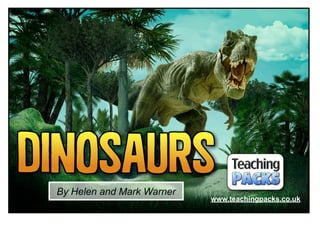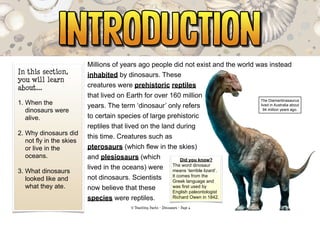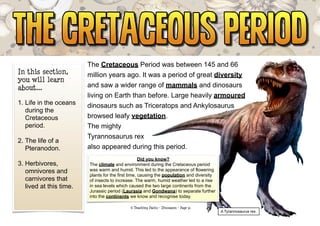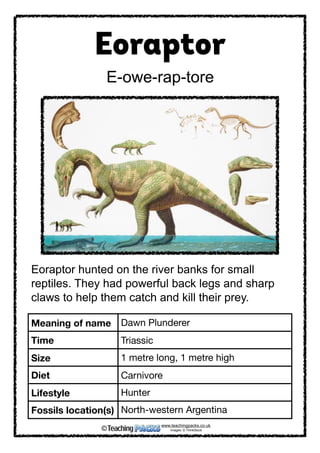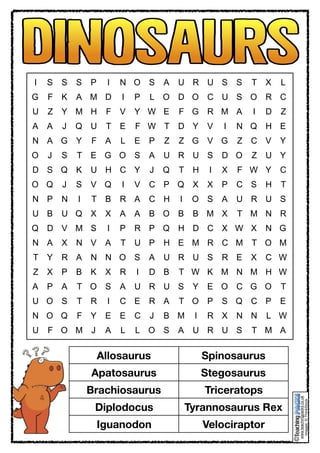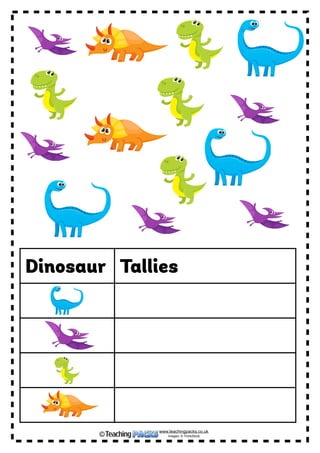The document provides an overview of dinosaurs, detailing their existence over 160 million years and categorizing them into various groups such as ceratopsians and sauropods based on body shape and diet. It also highlights the Cretaceous period's environment and significant fossils while explaining the process of fossil discovery and preservation. Additionally, it includes interesting facts about dinosaurs and their characteristics.
